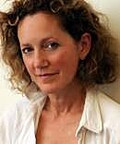Screening and assessing chemicals has become a priority among a number of organizations and agencies. Because of the gaps in the data and other challenges in evaluating chemical toxicity, better decisions about chemical use and truly safer alternatives depend on understanding the scope and limitations of different methods. To elucidate this process, three speakers discussed some of these methods and their current and potential impact on chemical policy reform and market changes.
Featured Speakers
Pete Myers, PhD, CEO and Chief Scientist of Environmental Health Sciences. Dr. Pete Myers holds a doctorate in the biological sciences from UC Berkeley and a Bachelor of Arts from Reed College. For a dozen years beginning in 1990, Myers served as director of the W. Alton Jones Foundation in Charlottesville, Virginia. Along with co-authors Dr. Theo Colborn and Dianne Dumanoski, Myers wrote Our Stolen Future (1996), a book that explores the scientific basis of concern for how contamination threatens fetal development. Myers is now actively involved in primary research on the impacts of endocrine disruption on human health. He has chaired the board of the Science Communication Network since its founding in 2003. He has served on the board of the H. John Heinz Center for Science, Economics and the Environment since 2007, and in May 2012 became Board Chair.
 Dr. Lauren Heine applies green chemistry, green engineering and design for the environment for sustainable business Lauren Heine, Consulting Co-Director, Clean Production Action practices. Lauren works closely with the US EPA Design for the Environment Program to facilitate the development of DfE Screens for Safer Chemicals. She co-authored the GreenScreen™ for Safer Chemicals, a tool for benchmarking chemicals based on inherent hazard and currently serves on the California Green Ribbon Science Panel. She is co-chairing the buyers tool development subcommittee for Wal-Mart's Sustainable Value Network for Chemical Intensive Products. She co-founded the Oregon-based Zero Waste Alliance and was a Fellow with the American Association for the Advancement of Science in the Green Chemistry Program at the US EPA.
Dr. Lauren Heine applies green chemistry, green engineering and design for the environment for sustainable business Lauren Heine, Consulting Co-Director, Clean Production Action practices. Lauren works closely with the US EPA Design for the Environment Program to facilitate the development of DfE Screens for Safer Chemicals. She co-authored the GreenScreen™ for Safer Chemicals, a tool for benchmarking chemicals based on inherent hazard and currently serves on the California Green Ribbon Science Panel. She is co-chairing the buyers tool development subcommittee for Wal-Mart's Sustainable Value Network for Chemical Intensive Products. She co-founded the Oregon-based Zero Waste Alliance and was a Fellow with the American Association for the Advancement of Science in the Green Chemistry Program at the US EPA.
 Scott Auerbach, PhD, DABT, Molecular Toxicologist in the Molecular Toxicology and Informatics Group within the Biomolecular Screening Branch of the National Toxicology Program (NTP) Division. He serves a dual role as a study scientist that designs and interprets guideline toxicity studies and as an experimentalist that seeks to understand variables that impact toxicity, such as species, genetics, disease state, nutrition, life stage and sex. In addition, Auerbach is interested in the development of genomic-based signatures derived from subchronic exposures that predict chronic toxicity and carcinogenicity.
Scott Auerbach, PhD, DABT, Molecular Toxicologist in the Molecular Toxicology and Informatics Group within the Biomolecular Screening Branch of the National Toxicology Program (NTP) Division. He serves a dual role as a study scientist that designs and interprets guideline toxicity studies and as an experimentalist that seeks to understand variables that impact toxicity, such as species, genetics, disease state, nutrition, life stage and sex. In addition, Auerbach is interested in the development of genomic-based signatures derived from subchronic exposures that predict chronic toxicity and carcinogenicity.
The call was moderated by Elise Miller, MEd, CHE's director.
